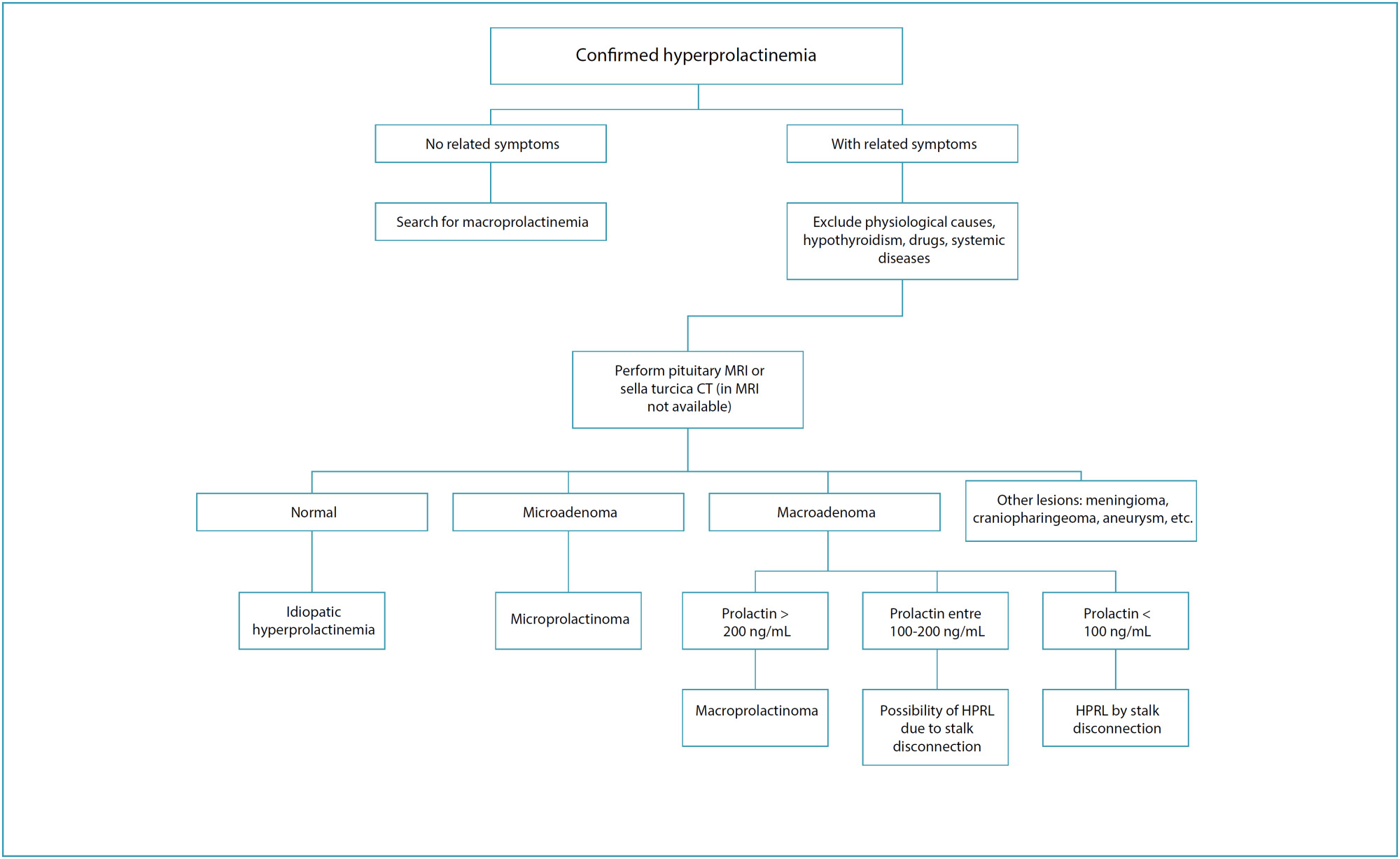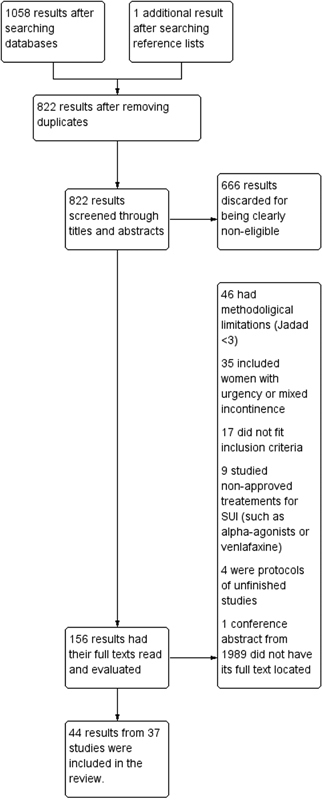-
Case Report07-10-2000
Mastitis due to Paracoccidioidomycosis: a Case Report
Revista Brasileira de Ginecologia e Obstetrícia. 2000;22(9):593-596
Abstract
Case ReportMastitis due to Paracoccidioidomycosis: a Case Report
Revista Brasileira de Ginecologia e Obstetrícia. 2000;22(9):593-596
DOI 10.1590/S0100-72032000000900009
Views74See moreParacoccidioidomycosis is an important systemic endemic mycosis in Latin America. This infection is usually acquired via inhalation of mycelial particles. Most infected subjects develop an asymptomatic infection, which is associated with various host-related factors such as sex, age, genetic, as well as characteristics of the infecting agent, mainly its virulence. It is a systemic pathology. A case of mastitis due to paracoccidioidomycosis is presented with the objective to demonstrate that elderly patients with a breast abscess should be submitted to biopsy.
-
Original Article07-10-2000
Analysis of Avoidable Mortality Among Women in Reproductive Age
Revista Brasileira de Ginecologia e Obstetrícia. 2000;22(9):579-584
Abstract
Original ArticleAnalysis of Avoidable Mortality Among Women in Reproductive Age
Revista Brasileira de Ginecologia e Obstetrícia. 2000;22(9):579-584
DOI 10.1590/S0100-72032000000900007
Views102See morePurpose: to evaluate the avoidable mortality among women in reproductive age, living in Campinas, SP, comparing two five-year periods: 1985-89 and 1990-94. Methods: death certificates of 3.086 women aged 10 to 49 years were studied, representing the total number of deaths during the period from January 1985 through December 1994. The criteria for avoidance were applied to these deaths using preventive, sanitary, early diagnosis and treatment, and mixed measures. The deaths were also classified as: with hardly avoidable causes, not well-defined causes and other causes. The specific mortality coefficient for each period of five years and the ratio between these coefficients were calculated. Results: there was a 20% increase in the avoidable mortality rate from the first to the second period. The main failure was observed among the group of avoidable causes by preventive and sanitary measures. The main increase in death causes by preventive measures resulted from AIDS. Among the causes of death avoidable by mixed measures, the increase of 50% in maternal mortality caused by abortion, as well as causes due to violence specially homicides, are emphasized. Conclusion: there was an increase in the proportion of avoidable death causes. Measures to prevent AIDS, abortion and to reduce violent deaths, specially homicides, should be political and social priorities in our Country.
-
Original Article07-10-2000
Treatment of Eclampsia: Comparative Study on the Use of Magnesium Sulfate and Phenytoin
Revista Brasileira de Ginecologia e Obstetrícia. 2000;22(9):543-549
Abstract
Original ArticleTreatment of Eclampsia: Comparative Study on the Use of Magnesium Sulfate and Phenytoin
Revista Brasileira de Ginecologia e Obstetrícia. 2000;22(9):543-549
DOI 10.1590/S0100-72032000000900002
Views67See morePurpose: to compare the efficiency between magnesium sulfate and phenytoin in the control of convulsions in patients with eclampsia and to evaluate the effects of magnesium sulfate and phenytoin on the maternal and perinatal prognosis in patients with eclampsia. Methods: this is a prospective, randomized and controlled study in which the results obtained with the use of anticonvulsive treatment in 77 women with eclampsia, treated with either magnesium sulfate or phenytoin, were analyzed comparatively. The drugs which were used in both therapeutic schemes were distributed in a one to one ratio, in randomly numbered boxes which presented similar characteristics. When a patient was admitted, a box was opened and its contents were given to the patient. Results: in the group whose patients were treated with magnesium sulfate, 19.5% had recurrent convulsions while in the group whose patients used phenytoin, 36.1% had new crises (p<0,05). The patients who were treated with magnesium sulfate showed a greater prevalence of postpartum hemorrhage (14,7%) than those to whom phenytoin was administered (2.7%) (p<0.05). In relation to the newborns, 17.0% of the group from mothers treated with magnesium sulfate presented respiratory distress as opposed to the group of newborns from mothers treated with phenytoin (11.8%), (p> 0,05). Conclusion: magnesium sulfate is shown to be more efficient than phenytoin in the control and the prevention of convulsions in patients with eclampsia. However, its utilization showed a higher prevalence of postpartum hemorrhage and respiratory distress. Phenytoin should be used in cases where the use of magnesium sulfate is contraindicated.
-
07-10-2000
Recadastramento de Sócios
Revista Brasileira de Ginecologia e Obstetrícia. 2000;22(9):541-541
-
01-04-2000
Comparação entre a Glicemia de Jejum Associada aos Fatores de Risco e o Teste Oral de Tolerância à Glicose Simplificado no Rastreamento do Diabete Gestacional
Revista Brasileira de Ginecologia e Obstetrícia. 2000;22(5):313-313
Abstract
Comparação entre a Glicemia de Jejum Associada aos Fatores de Risco e o Teste Oral de Tolerância à Glicose Simplificado no Rastreamento do Diabete Gestacional
Revista Brasileira de Ginecologia e Obstetrícia. 2000;22(5):313-313
DOI 10.1590/S0100-72032000000500014
Views49Comparação entre a Glicemia de Jejum Associada aos Fatores de Risco e o Teste Oral de Tolerância à Glicose Simplificado no Rastreamento do Diabete Gestacional[…]See more -
01-04-2000
Influência do Ambiente Peritoneal sobre a Iluminação e a Cor de Objeto Padrão Visualizado por meio de Videolaparoscopia: Estudo Experimental
Revista Brasileira de Ginecologia e Obstetrícia. 2000;22(5):313-313
Abstract
Influência do Ambiente Peritoneal sobre a Iluminação e a Cor de Objeto Padrão Visualizado por meio de Videolaparoscopia: Estudo Experimental
Revista Brasileira de Ginecologia e Obstetrícia. 2000;22(5):313-313
DOI 10.1590/S0100-72032000000500015
Views49Influência do Ambiente Peritoneal sobre a Iluminação e a Cor de Objeto Padrão Visualizado por meio de Videolaparoscopia. Estudo Experimental[…]See more -
01-04-2000
Monitorização Ambulatorial da Pressão Arterial em Gestantes Normotensas: Estudo Longitudinal do Ritmo Pressórico e da Freqüência Cardíaca
Revista Brasileira de Ginecologia e Obstetrícia. 2000;22(5):312-312
Abstract
Monitorização Ambulatorial da Pressão Arterial em Gestantes Normotensas: Estudo Longitudinal do Ritmo Pressórico e da Freqüência Cardíaca
Revista Brasileira de Ginecologia e Obstetrícia. 2000;22(5):312-312
DOI 10.1590/S0100-72032000000500013
Views57Monitorização Ambulatorial da Pressão Arterial em Gestantes Normotensas: Estudo Longitudinal do Ritmo Pressórico e da Freqüência Cardíaca[…]See more -
01-04-2000
Quimioterapia Neoadjuvante para o Tratamento do Câncer de Mama: Avaliação Clínica, Imunológica e Psicológica Comparada ao Índice de Resposta
Revista Brasileira de Ginecologia e Obstetrícia. 2000;22(5):312-312
Abstract
Quimioterapia Neoadjuvante para o Tratamento do Câncer de Mama: Avaliação Clínica, Imunológica e Psicológica Comparada ao Índice de Resposta
Revista Brasileira de Ginecologia e Obstetrícia. 2000;22(5):312-312
DOI 10.1590/S0100-72032000000500012
Views59Quimioterapia Neoadjuvante para o Tratamento do Câncer de Mama. Avaliação Clínica, Imunológica e Psicológica Comparada ao Índice de Resposta[…]See more
Search
Search in:
Tag Cloud
Pregnancy (252)Breast neoplasms (104)Pregnancy complications (104)Risk factors (103)Menopause (88)Ultrasonography (83)Cesarean section (78)Prenatal care (71)Endometriosis (70)Obesity (61)Infertility (57)Quality of life (55)prenatal diagnosis (51)Women's health (48)Postpartum period (46)Maternal mortality (45)Pregnant women (45)Breast (44)Prevalence (43)Uterine cervical neoplasms (43)







